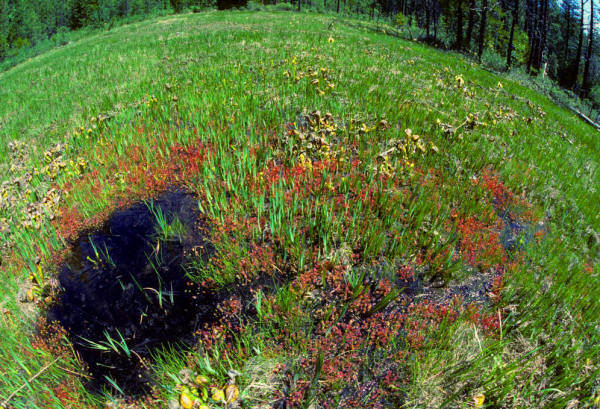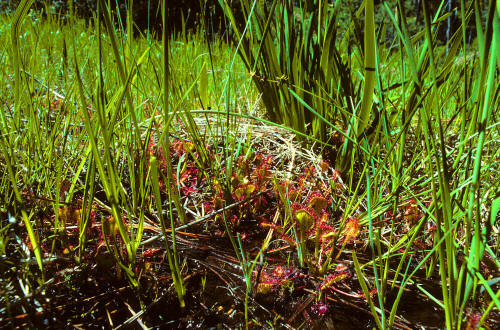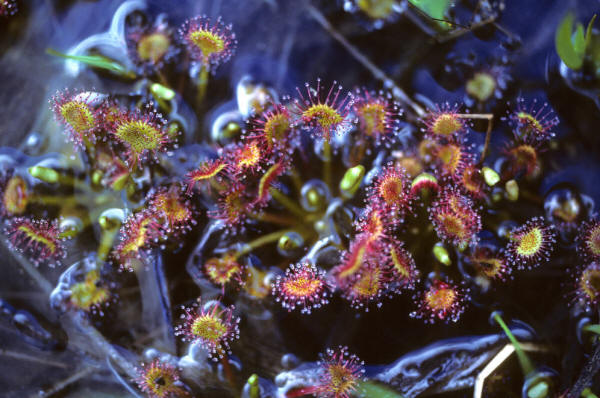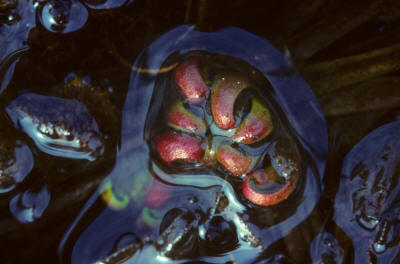|
Carnivorous Plants Story
|
||
|
|
Drosera rotundifolia One of the most commonly found sundews in the (boreal) northern hemisphere, the round-leaved sundew grow in Pacific Northwest and the northeastern part of the U.S. Darwin spent 2/3 ? of the book on this sundew. The plant forms a rosette of leaves sometimes measuring 15 cm across. A long petiole (leaf stalk) up to 6 cm long leads to a more or less round leaf blade 1.5 cm across. The upper surface of the leaf blade is covered with numerous stalked glands (tentacles) tipped with a secretions of gluey mucilage. Flowering occurs in early summer. A tall, slender flower stem supports many white flowers 7 mm across. The species forms a winter hibernaculum in autumn.
When the trigger hairs on the inner surface of the trap lobes are stimulated, the clam-shell-shaped trap closes suddenly --- often in less than a half second --- fast enough to capture such agile insects as a fly quite comfortably. Intermeshing marginal spines effectively prevent the prey's escape. After the initial rapid closure, the insect's struggle inside the trap further stimulates the trigger hairs, causing the trap lobes to close even more tightly. In a day or so, the trap is seen tightly sealed around the free margins of the lobes, with the marginal spines pointing outwardly. The digestive fluids start to ooze into the now sealed trap cavity. As the digestive process progresses, the products of digestion are swiftly absorbed through the leaf and
marginal spines effectively prevent the prey's escape. After the initial rapid
closure, the insect's struggle inside the trap further stimulates the trigger
hairs, causing the trap lobes to close even more tightly. In a day or so,
the trap is seen tightly sealed around the free margins of the lobes, with the
marginal spines pointing outwardly. The di Many temperate zone sundews produce a winter bud, called hibernaculum, during the cold months to protect themselves from chilly temperature. The winter bud is a layer of tightly fold leaves formed at the rosette center. The plants forming a hibernaculum endure freezing temperature in dormancy. Here, the round-leaf sundew (Drosera rotundifolia) is seen forming a winter bud, in an ice-cold water, in one of northern California habitats, in early December. The temperature can drop below freezing during the winter months.
Introduction Venus Flytrap Sundews Pitcher Plants Cobra Plant Butterworts Bladderworts
|
|



